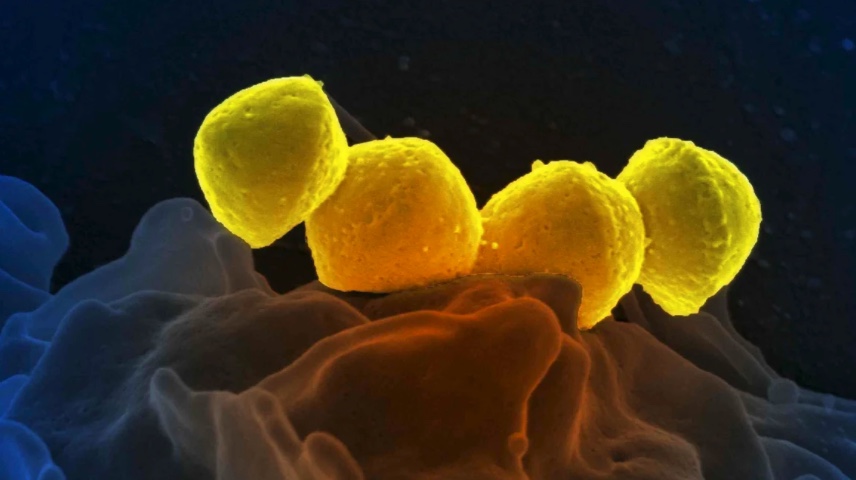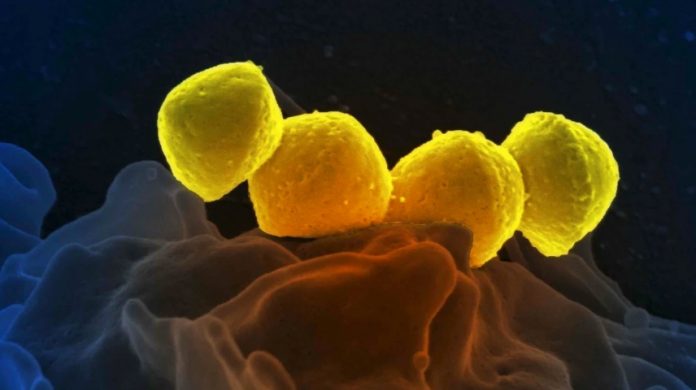ตัวเลขอย่างเป็นทางการระบุว่า กรณีของการติดเชื้อแบคทีเรียที่เป็นอันตรายถึงชีวิตสูงถึงระดับที่ไม่เคยเกิดขึ้นมาก่อนในญี่ปุ่น โดยผู้เชี่ยวชาญยังคงไม่สามารถระบุสาเหตุของการเพิ่มขึ้นได้ ณ วันที่ 2 มิถุนายน กระทรวงสาธารณสุขของญี่ปุ่นบันทึกผู้ป่วยกลุ่มอาการ Streptococcal Toxic Shock Syndrome (STSS) จำนวน 977 ราย ซึ่งมีอัตราการเสียชีวิตสูงถึง 30% ระหว่างเดือนมกราคมถึงเดือนมีนาคม มีผู้เสียชีวิตจากการติดเชื้อแล้ว 77 ราย ตามข้อมูลล่าสุดที่มีอยู่ การระบาดอย่างต่อเนื่องในญี่ปุ่นได้แซงหน้าสถิติการติดเชื้อเบื้องต้น 941 ครั้งในปีที่แล้ว ซึ่งสูงที่สุดนับตั้งแต่สถิติเริ่มในปี 2542 สถาบันโรคติดเชื้อแห่งชาติรายงานว่ามีผู้เสียชีวิต 97 รายเนื่องจาก STSS ในปีที่แล้ว ซึ่งเป็นจำนวนผู้เสียชีวิตสูงสุดเป็นอันดับสองในรอบ 6 ปีที่ผ่านมา
STSS คือการติดเชื้อแบคทีเรียที่พบไม่บ่อยแต่ร้ายแรง โดยแพร่กระจายเข้าสู่เนื้อเยื่อส่วนลึกและกระแสเลือด ในระยะแรกทำให้เกิดไข้ ปวดกล้ามเนื้อ และอาเจียน และอาจเป็นอันตรายถึงชีวิตได้อย่างรวดเร็วด้วยความดันโลหิตต่ำ บวม และอวัยวะล้มเหลว “แม้จะได้รับการรักษา STSS ก็สามารถเป็นอันตรายถึงชีวิตได้ จาก 10 คนที่เป็นโรค STSS มากถึงสามคนจะเสียชีวิต” ตามข้อมูลของ CDC ของสหรัฐอเมริกา กรณี STSS ส่วนใหญ่เกิดจากแบคทีเรียกลุ่ม A streptococcus (GAS) ซึ่งมักทำให้เกิดไข้และติดเชื้อในลำคอในเด็ก ในบางกรณีซึ่งพบไม่บ่อยนัก สเตรปเอจะแพร่กระจาย ทำให้เกิดสารพิษที่ช่วยให้เข้าสู่กระแสเลือดและทำให้เกิดอาการเจ็บป่วยร้ายแรง เช่น อาการช็อกจากพิษ สเตรปเอยังสามารถทำให้เกิดโรคเนื้อตาย (necrotizing fasciitis) ซึ่งเป็นโรค “กินเนื้อ” ที่อาจส่งผลให้สูญเสียแขนขาได้ ซึ่งมักส่งผลต่อผู้ป่วยที่มีภาวะสุขภาพอื่นๆ เช่น มะเร็งหรือเบาหวาน ที่ทำให้ระบบภูมิคุ้มกันอ่อนแอลง การติดเชื้อกลุ่ม A ที่ลุกลามลดลงด้วยมาตรการป้องกันโควิด-19 เช่น การสวมหน้ากากและการเว้นระยะห่างทางสังคม แต่จำนวนผู้ป่วยเพิ่มขึ้นหลังจากผ่อนคลายมาตรการเหล่านี้แล้ว
ในเดือนธันวาคม 2565 ประเทศในยุโรป 5 ประเทศรายงานการเพิ่มขึ้นของกลุ่มเชื้อ A streptococcus (iGAS) ที่รุกรานต่อองค์การอนามัยโลก ซึ่งส่วนใหญ่ส่งผลกระทบต่อเด็กอายุต่ำกว่า 10 ปี CDC ยังตั้งข้อสังเกตด้วยว่ามีผู้ป่วยเพิ่มขึ้นในขณะนั้น ภายในเดือนมีนาคม ทางการญี่ปุ่นเตือนว่าคดี STSS มีจำนวนเพิ่มขึ้นอย่างรวดเร็ว สถาบันโรคติดเชื้อแห่งชาติรายงานว่ามีผู้ป่วย STSS ที่เกี่ยวข้องกับ iGAS เพิ่มขึ้นตั้งแต่เดือนกรกฎาคม 2566 โดยเฉพาะอย่างยิ่งในผู้ที่มีอายุต่ำกว่า 50 ปี CDC ระบุว่าผู้สูงอายุที่มีบาดแผลเปิดหรือเพิ่งได้รับการผ่าตัดเมื่อเร็วๆ นี้มีความเสี่ยงสูงที่จะเป็นโรค STSS อย่างไรก็ตาม เกือบครึ่งหนึ่งของผู้ติดเชื้อยังไม่ทราบแหล่งที่มาของการติดเชื้อ สาเหตุของการเพิ่มขึ้นเมื่อเร็วๆ นี้ของผู้ป่วย STSS ในญี่ปุ่นยังไม่ชัดเจน แต่ศาสตราจารย์ Ken Kikuchi จากมหาวิทยาลัยการแพทย์สตรีแห่งโตเกียว แนะนำว่าภูมิคุ้มกันที่อ่อนแอลงหลังการระบาดของโควิด-19 เป็นปัจจัยที่เป็นไปได้ เนื่องจากการไม่สัมผัสกับแบคทีเรียในระหว่างการแพร่ระบาดอาจทำให้ความอ่อนแอต่อ การติดเชื้อ
Japan reports record surge in potentially deadly bacterial infections

Cases of a dangerous and highly fatal bacterial infection have reached unprecedented levels in Japan, according to official figures, with experts still unable to determine the cause of the increase. As of June 2, Japan’s Health Ministry had recorded 977 cases of streptococcal toxic shock syndrome (STSS), which has a mortality rate of up to 30%. Between January and March, 77 people have died from the infection, according to the latest available data. This ongoing outbreak in Japan has already surpassed last year’s record of 941 preliminary infections – the highest since statistics began in 1999. The National Institute of Infectious Diseases reported 97 deaths due to STSS last year, the second-highest number of fatalities in the past six years.
STSS is a rare but serious bacterial infection that spreads into deep tissues and the bloodstream. Initially causing fever, muscle pain, and vomiting, it can quickly become life-threatening with low blood pressure, swelling, and organ failure. “Even with treatment, STSS can be deadly. Out of 10 people with STSS, as many as three will die,” according to the US CDC. Most STSS cases are caused by group A streptococcus (GAS) bacteria, which typically cause fever and throat infections in children. In rare instances, strep A becomes invasive, producing a toxin that allows it to enter the bloodstream and cause severe illnesses like toxic shock. Strep A can also cause necrotizing fasciitis, a “flesh-eating” disease that may result in limb loss. This usually affects patients with other health conditions, such as cancer or diabetes, that weaken their immune systems. Invasive group A strep infections were reduced by COVID-19 measures like masking and social distancing, but cases rose after these measures were relaxed.
In December 2022, five European countries reported an increase in invasive group A streptococcus (iGAS) to the World Health Organization, mainly affecting children under 10. The CDC also noted a rise in cases at that time. By March, Japanese authorities warned of a surge in STSS cases. The National Institute of Infectious Diseases reported an increase in iGAS-related STSS cases since July 2023, especially in those under 50. The CDC states that older individuals with open wounds or recent surgeries are at higher risk for STSS. However, the source of infection remains unknown for nearly half of the cases. The cause of the recent rise in STSS cases in Japan is unclear, but Professor Ken Kikuchi from Tokyo Women’s Medical University suggests weakened immunity post-COVID-19 as a possible factor, as lack of exposure to bacteria during the pandemic may have increased susceptibility to infections.
By CNN NEWS

















